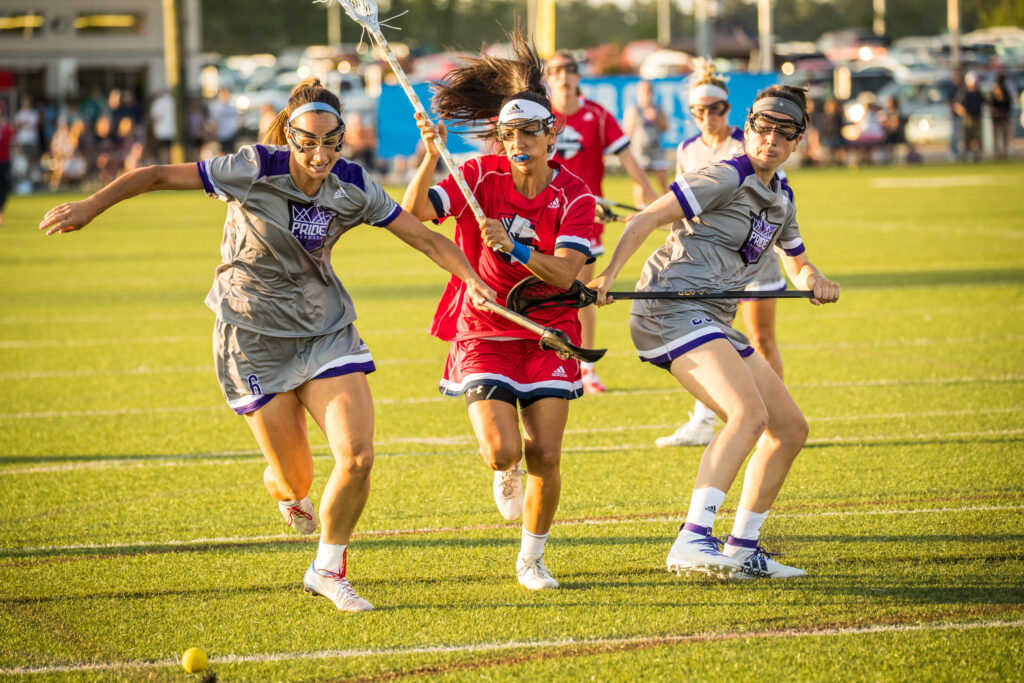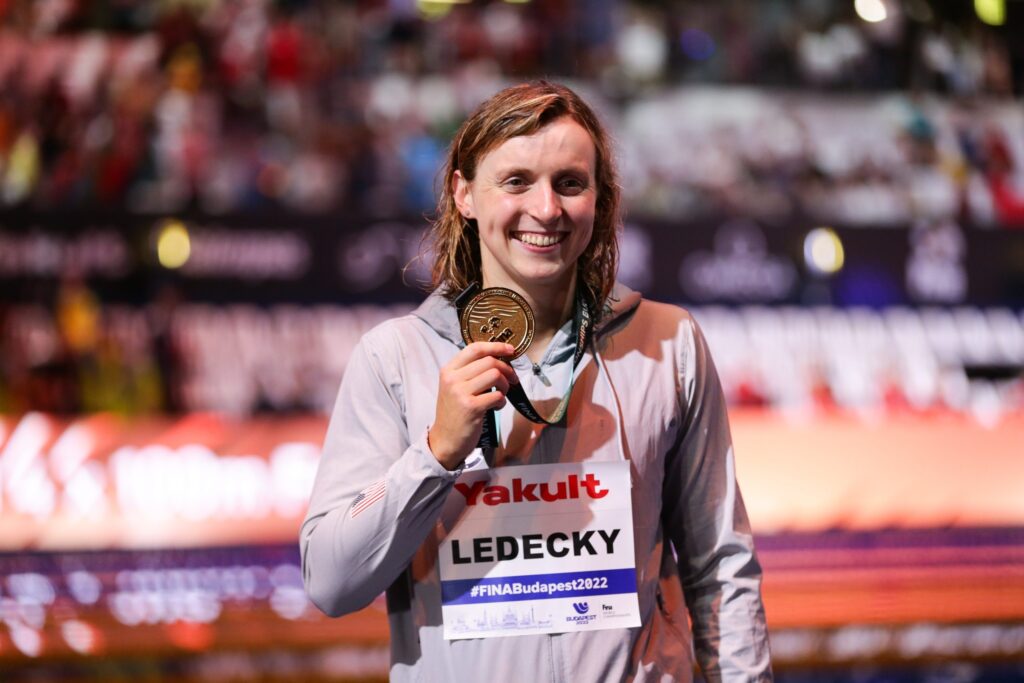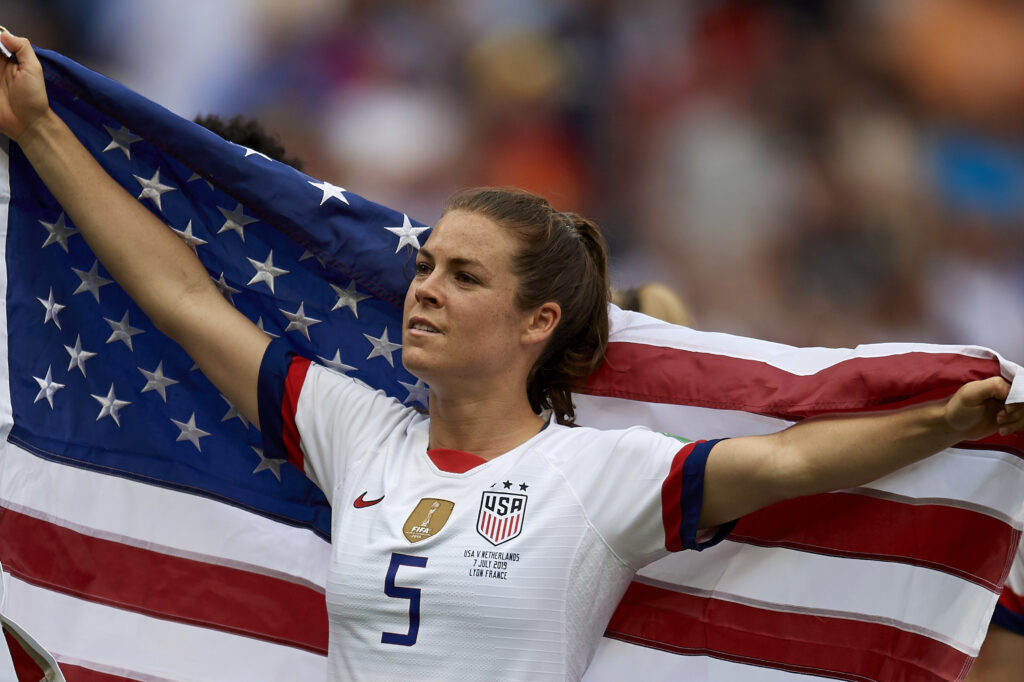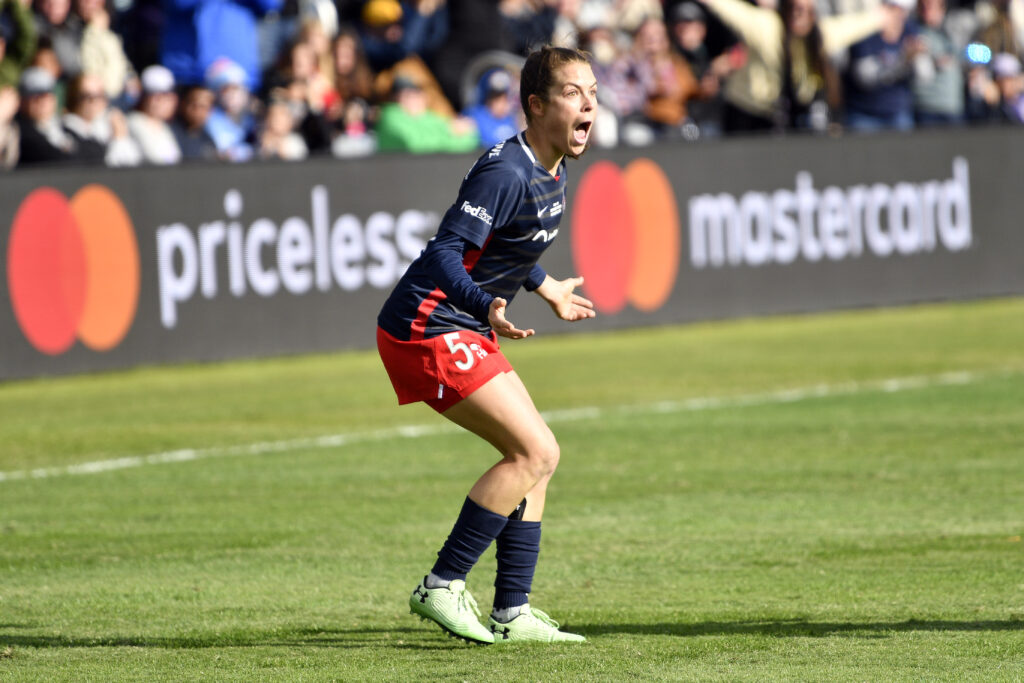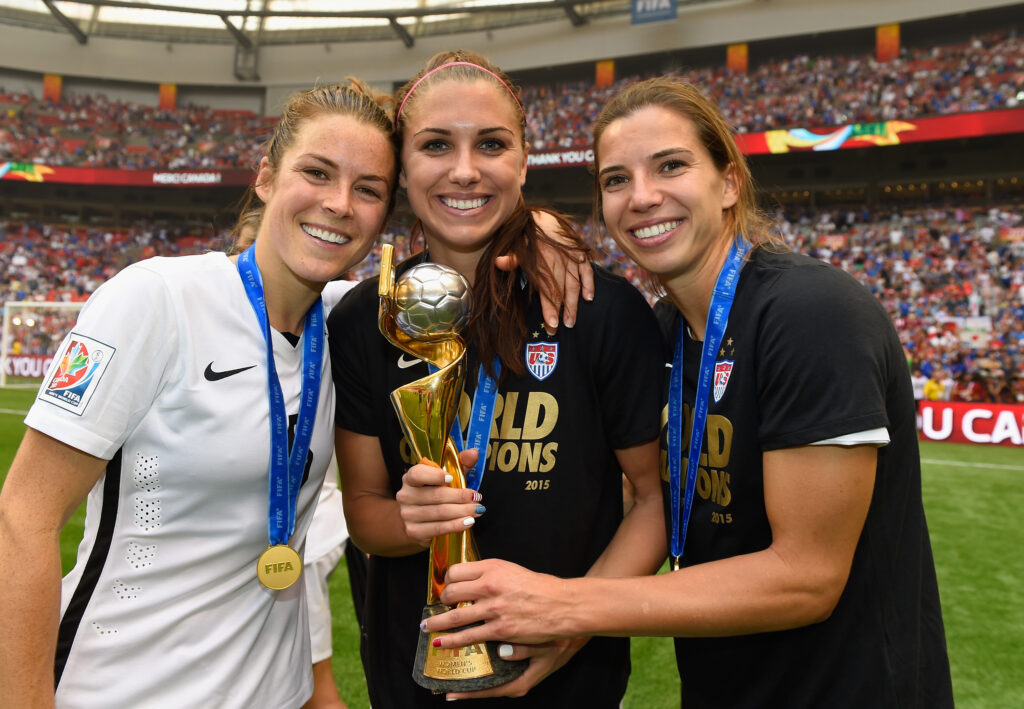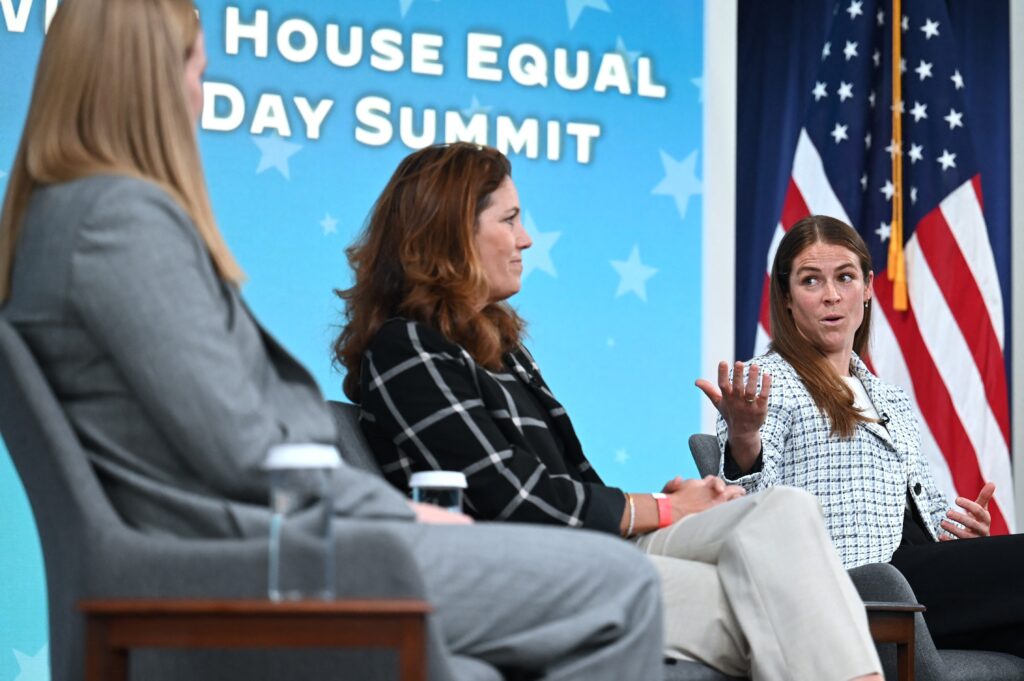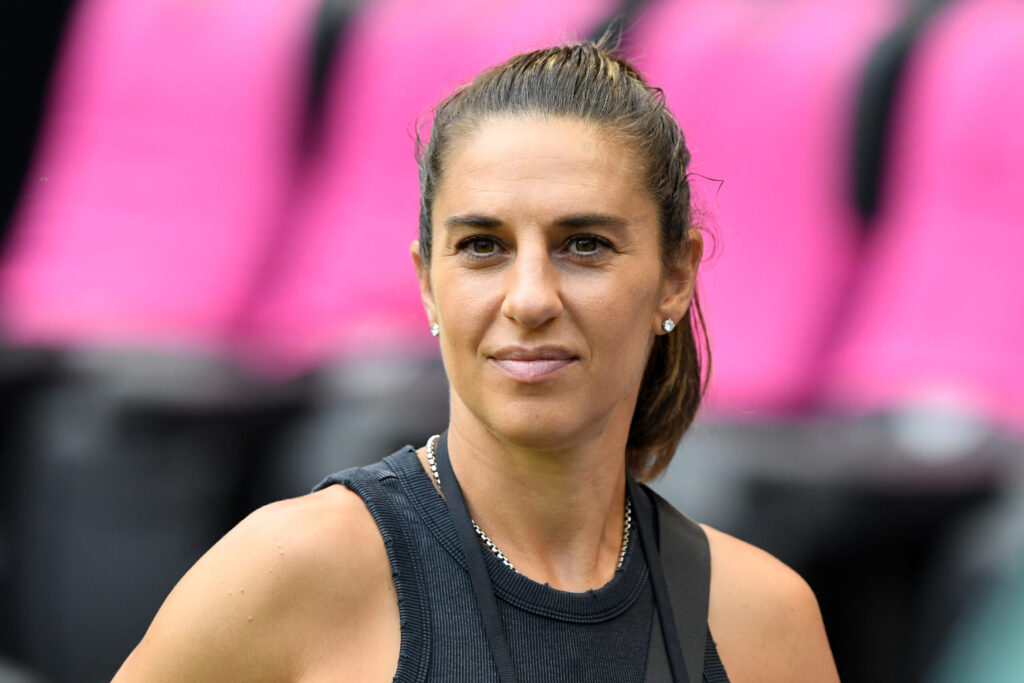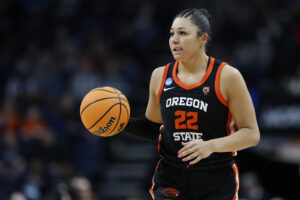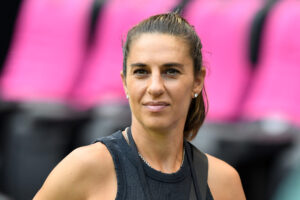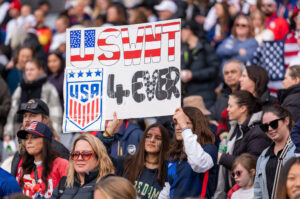The WPLL is the first and only women’s professional lacrosse league. Founded in 2018, the league is presently made up of four teams. Beyond growing the game and providing professional opportunities for players who have graduated from college, the WPLL also hopes to provide legitimacy for the sport as it pushes to be included in future Olympics.
Michele DeJuliis is the CEO and founder of the league. A US National Lacrosse Hall of Fame inductee, DeJuliis was a four-time All-American at Penn State who went on to help the US women’s national lacrosse team win gold at the 2009 Lacrosse World Cup. She spoke with Just Women’s Sports about the challenges of sustaining a young league, the impact of coronavirus, and how the WPLL’s developmental program is training and mentoring the next generation of national team players.
Could you first walk us through your own professional background and how you got involved in lacrosse?
I’m from Baltimore, which is a hotbed for lacrosse. I played at Penn State, and after I graduated I was teaching for a year in Baltimore. But then my life took a little bit of a turn, and I ended up working for the Baltimore City police department. I did SWAT team work and some undercover drug work. During that time, I was still playing on the US lacrosse team and was still very connected to the sport. I even started a club team while I was doing police work. Then a position at Princeton opened up, and I went there and coached for eight years. I left in 2012 because my wife and I decided to have kids, but I continued to run my lacrosse club, and then I started an events business with my current business partner, Becky Wells. And then three years ago I started the WPLL. So now I’m running all of those things, which keeps me busy, and I have young kids who keep me active.
What have been the biggest hurdles in creating and sustaining the WPLL?
Right now, it’s just not high dollars, so that makes it difficult. We had to do some restructuring this year that, at the leadership level of the organization, we felt was necessary to sustain a successful league. But at the end of the day, we need sponsors and investors to step up and be consistent. One way that we have managed to be somewhat self sustainable is through the “futures” side of our league.
Can you talk about what that is?
We select and invite the top players from 12 regions of the country to a three day summit and clinic coached by our pros. At the summit, we incorporate both leadership and competence training, and we get these young women connected to the WPLL program and our athletes. It’s a mentoring opportunity. The young fans love lacrosse and they want to get to the next level. They now get the opportunity to be in front of the pros that they look up to. I think it’s really important to make that connection.
Is athlete mentorship a big part of the overall mission of the WPLL?
It is a major part of the mission, there’s no doubt about that. That is something that I am really passionate about, and I think that we have been successful in that mission so far. This is also the second year of our partnership with US Lacrosse. For younger athletes to get on the US track, you have to come through the WPLL Futures program, which, like I said, focuses on both on-field performance and leadership development. We evaluate and recommend players to the US coaches, and that is how most of the kids get invited to the US training camps in August.
You mentioned the recent restructuring. The Fire have been dropped as a team, and travel rosters have been cut. What was the thought process behind these specific changes?
Preliminary sports are tough in general, and I think for our sport, we wanted to make sure that we could maintain a league that stays competitive and increases visibility. We’re trying to grow the game and create an opportunity to get this sport to the Olympic level. Doing all that costs a lot of money, and we knew we had to make some changes to make sure our players were happy and that we could still follow through on our mission. Dropping a team automatically saves money just because of the fact that you’re not playing the extra games. And then we also adjusted the travel roster from 19 to 15. Over the past two season, we found that when there were 19 women on a roster, not all of them were playing, and we wanted to make sure that our GMs and our coaches were being really thoughtful about who they selected for their travel roster on any given weekend.
Are ticket sales a selling point for investors and sponsors?
One of the reasons why I wanted to create the Futures program as a way to make money is because I didn’t think we were going to make it as a league just selling tickets. Is the game growing at a fast pace? For sure. I mean, it was unbelievable how many people came to the Final Four this past year. But that type of event happens once a year. And so, on average, unless you have 20,000 people at a game, you’re not going to get the credit that we would love to get on a daily basis. It’s just not going to happen right now, at least until this sport becomes even more visible.
In terms of sponsors, there’s not a ton of money being invested in women’s lacrosse. The ones that are out there usually just dump money into the men’s game, and on the women’s side, it seems like kind of an afterthought now. I think there are some companies that don’t want to admit that, but I’ve seen it. Until somebody steps up and says, no, we care about this sport and making sure that we have equal opportunities, it just doesn’t seem like a priority for a lot of companies to budget money for the women’s game. I think we struggle there, because even when we are having conversations with potential sponsors, the typical answer is that they just don’t have that money, or, yes, we can support you but can we do it with a quit date? We’ve had a lot of conversations, but not cash, and cash is what we need to help us grow.
If you don’t mind me asking, who is the main investor in the WPLL? Did you go through rounds of funding, how did that work?
I’ve been the main investor, but we do have one investor that is on the league side. We’ve also had some generous donations to our foundation and have had decent support from sponsportships, like ESPN. It’s getting better this year.
Do the WPLL players get paid?
Yes, they do. They get paid per game. And their travel expenses are covered. But they’re definitely not playing for the money. Probably 45% of our women are college coaches. Some of them are on the US national team or another international team. They play because they just love the sport and they’re not ready to hang it up just yet. And they’re talented enough to be in the league. So they’re definitely doing it for the passion and to pave the way for the younger generation. And that’s what our mission is all about. It is easier to get them to buy in when they know what we’re trying to do.
Have there been any talks of collaboration with the PLL, which has had tremendous success after just one season?
I have had a lot of conversations with Paul and Mike Rabil, the PLL co-founders, and they are highly interested in us remaining partners. And we do feel like at some point we’ll probably all come together. I think that they’ve done a tremendous job. They also have a social media team of close to 20 people, and we have about 2, so there’s just a big difference in where we are at compared to them. They’ve got media play, and they’re doing what they need to do. They’re getting the brand out there, and people are recognizing that they have a lot of followers. We’re trying to build that same base with fewer resources. And I think we’ve been able to do a lot with a little. But in terms of collaborating and partnering with their league in some capacity, that is something we want to continue to do and plan to do for the 2020 season.
At the end of the day, it’s just nice to know that there are other people in the sport of lacrosse that are trying to do what we are doing at the startup level. We’ve got a lot of the same goals, but on our end, we need to show more growth before we can make more serious partnership moves with the PLL.
